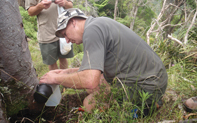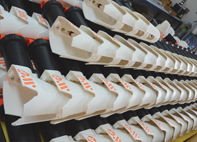
Considered a “noxious pest” by the New Zealand government, NZ$70 million taxpayer dollars are spent annually in an attempt to control the possum. Most of the money is spent aerially spreading toxic poison, sodium fluoroacetate (1080), which indiscriminately kills other animals. While not only inhumane and ecologically maladroit, these efforts have had little success.
A group of trappers, manufacturers, and industry people have come together to reinvigorate the possum pelt market. Where the government has failed, the market is stepping in to solve the ecological and animal welfare issues, while returning value to New Zealanders in the form of jobs and more money in the tax coffers.
Manufactures such as Goodnature have created pragmatic solutions for exterminating the possum. Their device delivers a fatal blow to the head by a CO2 powered piston, eliminating the need for any nasty toxins. Especially when combined with merino wool and silk, the pelts from these possums can then be used in a range of ultra-soft, lightweight garments. PERC Enviropreneur Institute Alumna Teresa Platt (’07) and her associate Chrys Hutchings have both found ways to capitalize on the possum pelt in ecologically sustainable ways, once again proving market-based solutions can work to protect the environment.
Read the full article here in the latest issue of PERC Reports.




